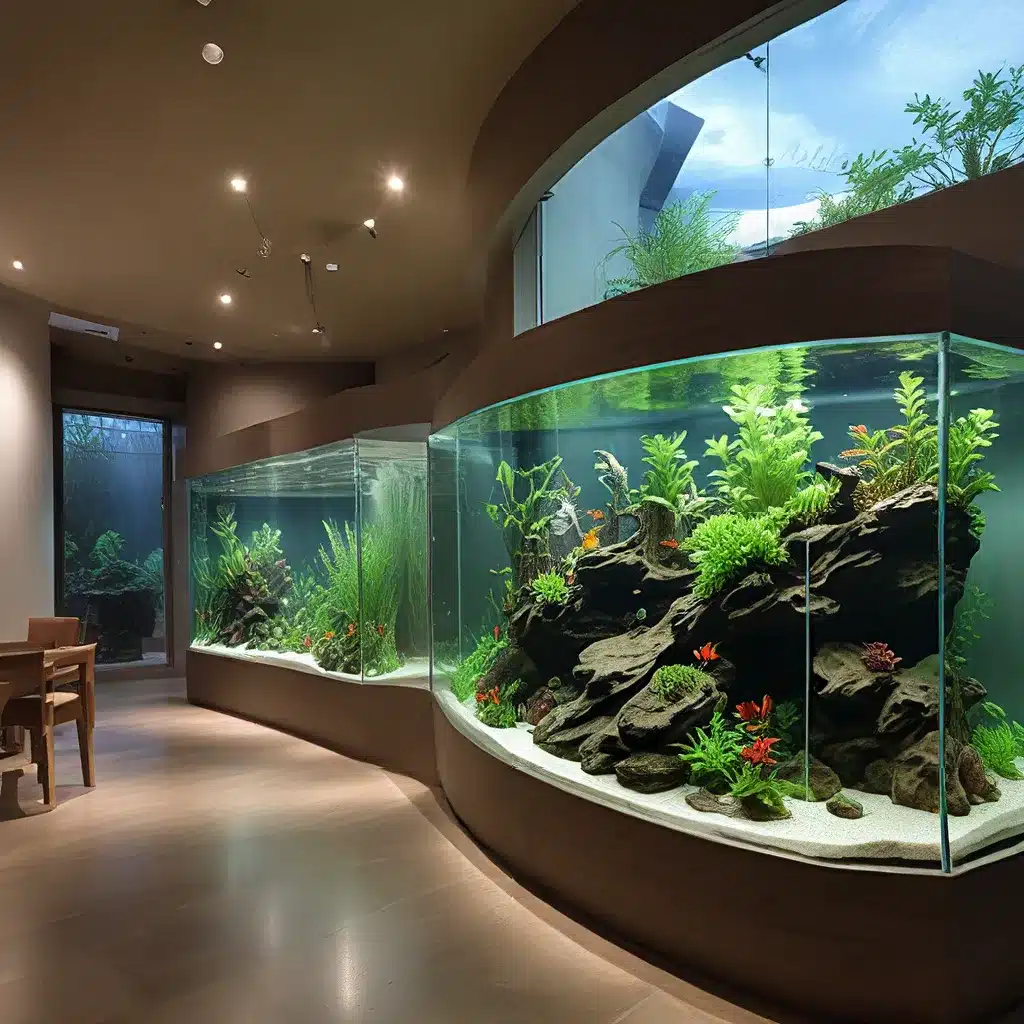
Unlocking the Secrets of Vibrant Aquatic Ecosystems
Creating a thriving and sustainable aquarium is a delicate balance of beauty, function, and environmental responsibility. As aquarium enthusiasts, we have a unique opportunity to cultivate remarkable underwater landscapes that not only captivate the senses but also contribute to the conservation of aquatic life. In this comprehensive guide, we’ll explore the intricate world of aquascaping and water management, empowering you to design aquariums that are both visually stunning and ecologically sound.
Embracing the Art of Aquascaping
Aquascaping, the art of arranging aquatic plants, rocks, and décor to create natural-looking underwater landscapes, is a key aspect of sustainable aquarium design. By carefully selecting and positioning these elements, you can craft mesmerizing habitats that mimic the beauty and complexity of nature. Red aquarium plants, for instance, can add a vibrant contrast to the typical green hues, infusing your tank with a captivating burst of color.
To achieve a truly sustainable aquascape, it’s crucial to consider the specific needs and growth patterns of the plants you choose. Opt for hardy, low-maintenance species that thrive in the water parameters and lighting conditions of your setup. This not only ensures the long-term health of your aquatic ecosystem but also reduces the need for frequent maintenance and intervention.
Mastering Filtration and Water Management
Alongside the aesthetic appeal of your aquascape, the quality and management of your aquarium’s water are vital components of a sustainable system. Investing in a high-performance filtration system is essential, as it helps maintain optimal water parameters and removes waste and toxins that can harm your aquatic inhabitants.
When selecting a filtration setup, consider incorporating a combination of mechanical, biological, and chemical filtration components. Mechanical filters remove large debris, while biological filters house beneficial bacteria that break down ammonia and nitrites. Chemical filters, such as activated carbon, can further purify the water by removing dissolved organic compounds and discoloration.
Balancing the various filter types and regularly maintaining them is key to ensuring a thriving, eco-friendly aquarium. By staying vigilant about water quality, you can create a harmonious environment that supports the long-term health of your aquatic species.
Nurturing Nutrient Cycling and Oxygenation
In nature, aquatic ecosystems rely on a delicate balance of nutrient cycling and oxygenation to sustain life. Replicating this intricate process in your home aquarium is crucial for establishing a self-sustaining, low-maintenance environment.
Incorporating live plants into your aquascape plays a vital role in this nutrient cycle. As plants photosynthesize, they consume carbon dioxide and release oxygen, which is essential for the respiration of fish and other aquatic organisms. Additionally, the plants absorb excess nutrients, preventing algal blooms and maintaining water clarity.
To further enhance oxygenation, consider using efficient water circulation and aeration systems. These can include strategically placed powerheads, submerged water pumps, or even surface-agitating air stones. By ensuring adequate water movement and gas exchange, you can create a thriving, well-oxygenated environment for your aquatic inhabitants.
Balancing Bioload and Species Selection
One of the hallmarks of a sustainable aquarium is striking the right balance between the bioload (the total amount of waste produced by the inhabitants) and the system’s capacity to process that waste. This delicate equilibrium is largely influenced by the species you choose to stock your tank.
When selecting fish and other aquatic creatures, research their individual care requirements, including water parameters, space needs, and compatibility with tankmates. By choosing species that are well-suited to your aquarium’s size and setup, you can minimize the risk of overcrowding, aggression, and excessive waste production.
Additionally, consider incorporating algae-eating species, such as plecos or certain shrimp, to help maintain water clarity and reduce the manual effort required for algae removal. These “cleanup crew” members can play a vital role in keeping your aquarium in balance.
Embracing Eco-Friendly Practices
Sustainable aquarium keeping extends beyond the confines of your tank. As conscious aquarists, we have a responsibility to adopt eco-friendly practices that minimize our environmental impact. This can include:
- Responsible Sourcing: Research and support ethical suppliers that prioritize sustainability in their breeding and distribution practices.
- Energy Efficiency: Choose energy-efficient equipment, such as LED lighting and high-performance pumps, to reduce your aquarium’s carbon footprint.
- Water Conservation: Implement water-saving strategies, such as partial water changes and the use of RO/DI systems, to minimize freshwater consumption.
- Waste Management: Properly dispose of aquarium waste, including fish waste, filter media, and chemical products, to prevent environmental contamination.
By embracing these eco-friendly principles, you can enjoy the beauty and wonder of your aquarium while contributing to the larger goal of environmental stewardship.
Conclusion: Cultivating a Sustainable Aquatic Eden
Designing and maintaining a sustainable aquarium is a rewarding journey that combines artistic expression, scientific understanding, and environmental consciousness. By mastering the art of aquascaping, implementing effective filtration and water management strategies, and adopting eco-friendly practices, you can create a vibrant, low-maintenance aquatic ecosystem that reflects the delicate balance of nature.
Remember, the key to a truly sustainable aquarium lies in your commitment to providing the best possible care for your aquatic inhabitants while minimizing your ecological footprint. With dedication and a passion for conservation, you can unlock the wonders of the underwater world and inspire others to join you in this captivating and environmentally responsible hobby.
Dive into the world of sustainable aquariums and let your aquatic Eden flourish, serving as a testament to the harmonious coexistence of beauty and eco-friendliness.

